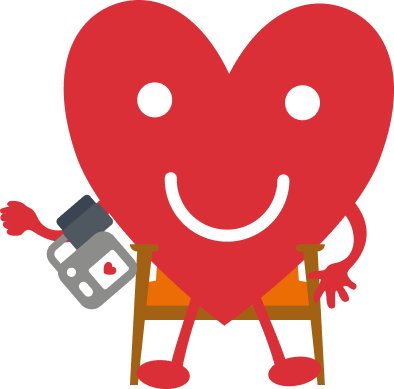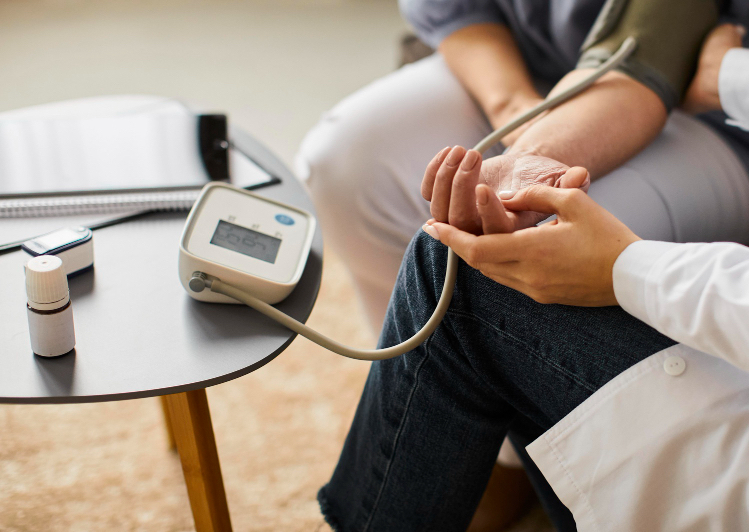High blood pressure
High blood pressure, or hypertension, rarely has noticeable symptoms. But if untreated, it increases your risk of developing serious health problems such as heart attacks and strokes.




High blood pressure is one of the most common conditions in this country – more than one in four adults in the UK have the condition. Across Cheshire & Merseyside about In June 2023, there were 370,931 people in Cheshire & Merseyside on the hypertension register.
However, the under diagnosis of hypertension is recognised as a problem nationally with recent estimates suggesting that the actual number of people living with hypertension could be as high as 670,000 people.
Why should I know my blood pressure?
If your blood pressure is too high, it can cause damage. It narrows the blood vessels and can cause strokes and heart attacks, angina, heart failure, kidney failure and narrowed leg arteries.
Taking just five minutes to measure your blood pressure could save your life! You can take your blood pressure at home using a blood pressure monitor or your practice nurse or pharmacist can measure your blood pressure. Read further for more information on both those options.


Know Your Numbers – is my blood pressure high, normal or low?
Every blood pressure reading consists of two numbers or measurements. They are shown as one number on top of the other and measured in mmHg, which means millimetres of mercury.
However, your doctor may recommend a lower target if you have heart or circulatory disease, including coronary heart disease, angina, heart attack or stroke, diabetes or kidney disease.
If your reading is 120/80mmHg, for example, you might hear your doctor or nurse say your blood pressure is “120 over 80”.
The first (or top) number represents the highest level your blood pressure reaches when your heart contracts and pumps blood through your arteries – your systolic blood pressure.
The second (or bottom) number represents the lowest level your blood pressure reaches as your heart relaxes between beats – your diastolic blood pressure.
If you consistently have a clinic BP reading of 140/90 or higher, you may have high blood pressure (hypertension). High blood pressure increases your risk of developing certain health conditions, including heart attacks and strokes.
Generally, the lower your blood pressure, the healthier you are. A healthy blood pressure is usually considered to be between 90/60 and 120/80.
People with readings of around 90/60 or lower are generally considered to have low blood pressure.
How do I know if my blood pressure is too high?
If your blood pressure readings from any setting are consistently above 140/90mmHg you may have high blood pressure. You should get a review at your GP surgery to check. Sustained high blood pressure can damage the heart and increase the risk of stroke.
A few simple lifestyle changes can make all the difference
Click the cards below to reveal how each factor can help to reduce your risk of CVD.


Eating more fruit and vegetables
Fruit and veg contain potassium, a mineral which is essential for keeping your body ticking over and helps to lower your blood pressure. Eating fruit and veg directly counters the effect of salt, which raises your blood pressure.


Drinking alcohol in moderation
Drinking too much alcohol can raise blood pressure to unhealthy levels. Having more than three drinks in one sitting temporarily raises blood pressure. Repeated binge drinking can lead to long-term increases in blood pressure.


Exercising 5 times per week
Regular exercise makes the heart stronger. A stronger heart can pump more blood with less effort. As a result, the force on the arteries decreases.


Losing weight if you need to
If you are overweight, losing weight will lower your blood pressure because your heart doesn’t have to work so hard to pump the blood around your body.


Reducing the amount of salt in your diet
A high salt diet disrupts the natural sodium balance in the body. This causes fluid retention which increases the pressure exerted by the blood against blood vessel walls (high blood pressure).


Quitting smoking
Nicotine stimulates the release of Adrenaline and Noradrenaline, which are hormones that increase blood pressure. Quitting smoking can reduce high blood pressure and lower the risk of heart attack and stroke.
Even if you don’t have high blood pressure, making some simple lifestyle changes may help prevent you developing it in the future.


Low blood pressure
Low blood pressure can sometimes cause dizziness. If you are on treatment to lower your blood pressure, have readings below 90/60 and feel dizzy, you should talk to your practice nurse or GP about reducing your medication.
It is also important to think about low blood pressure when you are feeling ill. If you are on treatment to lower your blood pressure and feeling ill, you can sometimes get dehydrated. Conditions like sickness and diarrhoea can cause dehydration. Dehydration can result in low blood pressure and dizziness, and it can affect your kidneys.
It is worth speaking to your GP if this affects you as it might be sensible to reduce some of your blood pressure medicine until your blood pressure returns to normal and you are no longer dehydrated. Do not stop your blood pressure medication without speaking to your GP or pharmacist first.


Many people are now eligible for a FREE blood Pressure check from their Community Pharmacy as part of a new NHS service called the National Hypertension Case Finding Service
Those eligible for the service are:-
- Adults who are 40 years old or over, who haven’t already got a diagnosis of high blood pressure.
- Adults under the age of 40 who request the service because they have a recognised family history of high blood pressure may receive the service at the pharmacist’s discretion.
- People between 35 and 39 years old who are approached about or request a blood pressure check may be tested at the pharmacist’s discretion.
What is 24-Hour Ambulatory Blood Pressure Monitoring?
24-hour Ambulatory Blood Pressure Monitoring (ABPM) involves your blood pressure being measured at regular time intervals over 24 hours as you move around, going about your normal daily activities. It uses a small digital blood pressure machine that is attached to a belt around your body and connected to a cuff around your upper arm. It is small enough that you can go about your normal daily life and even sleep with.
Hypertension and monitoring blood pressure
Monitoring blood pressure, how and when to get checked
Checking and monitoring blood pressure can be done at home and can reduce the risk of heart attacks and strokes.
Hypertension: so you’ve been told you blood pressure is too high?
High blood pressure is one of the most common health problems in the UK, affecting over a quarter of people in England.
